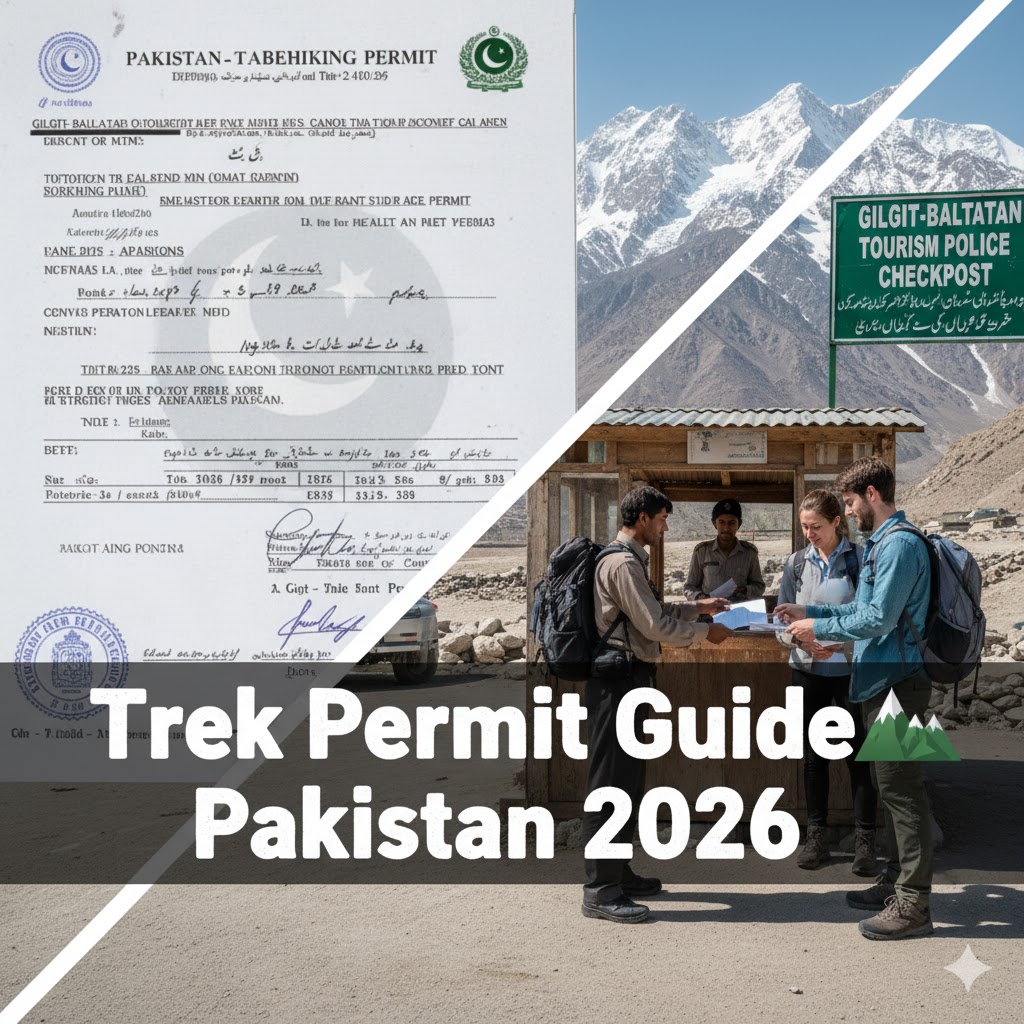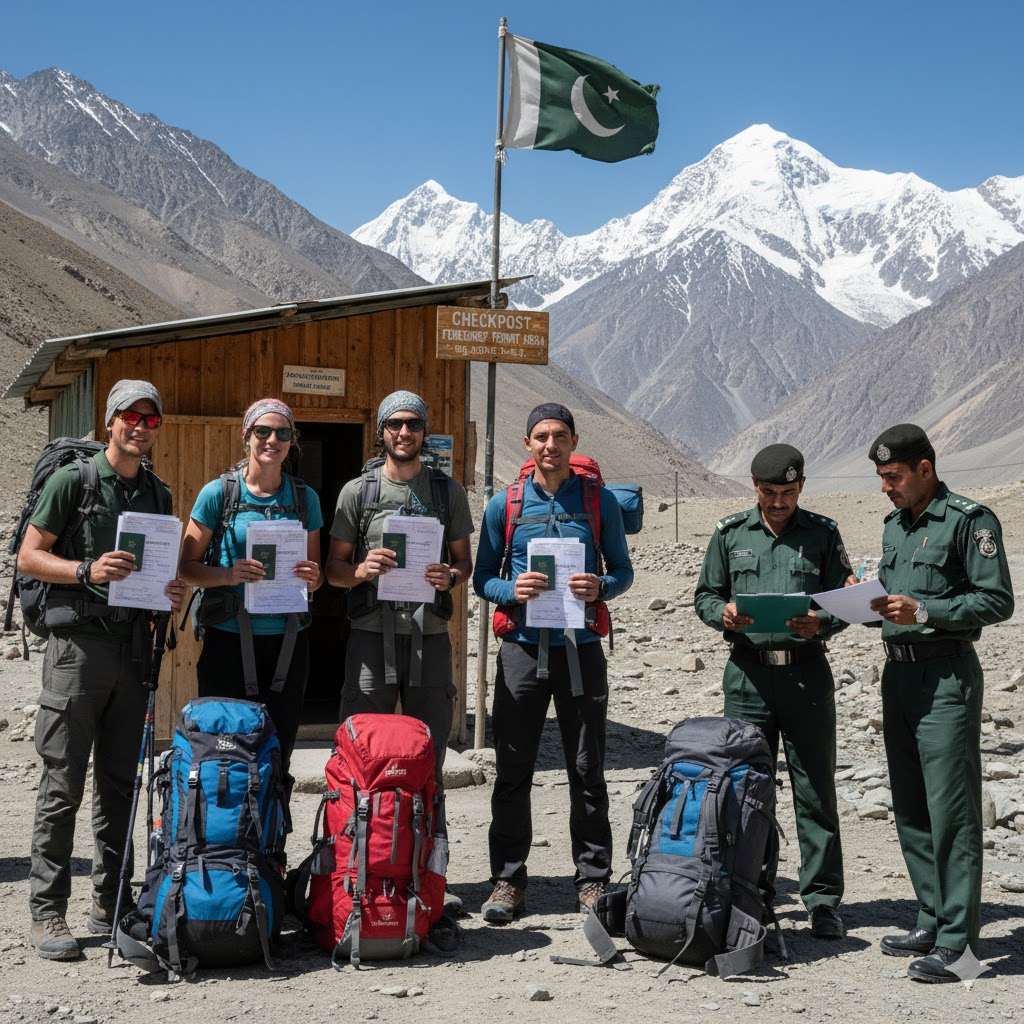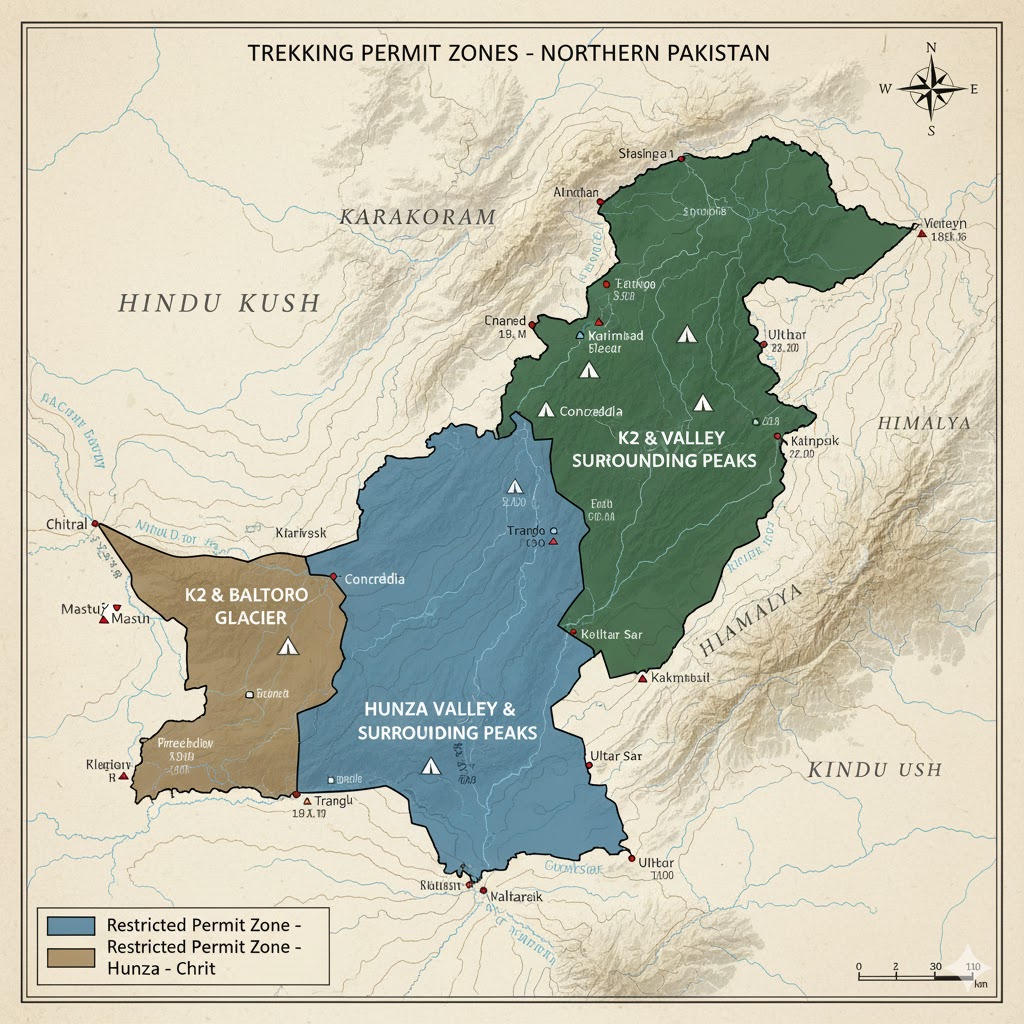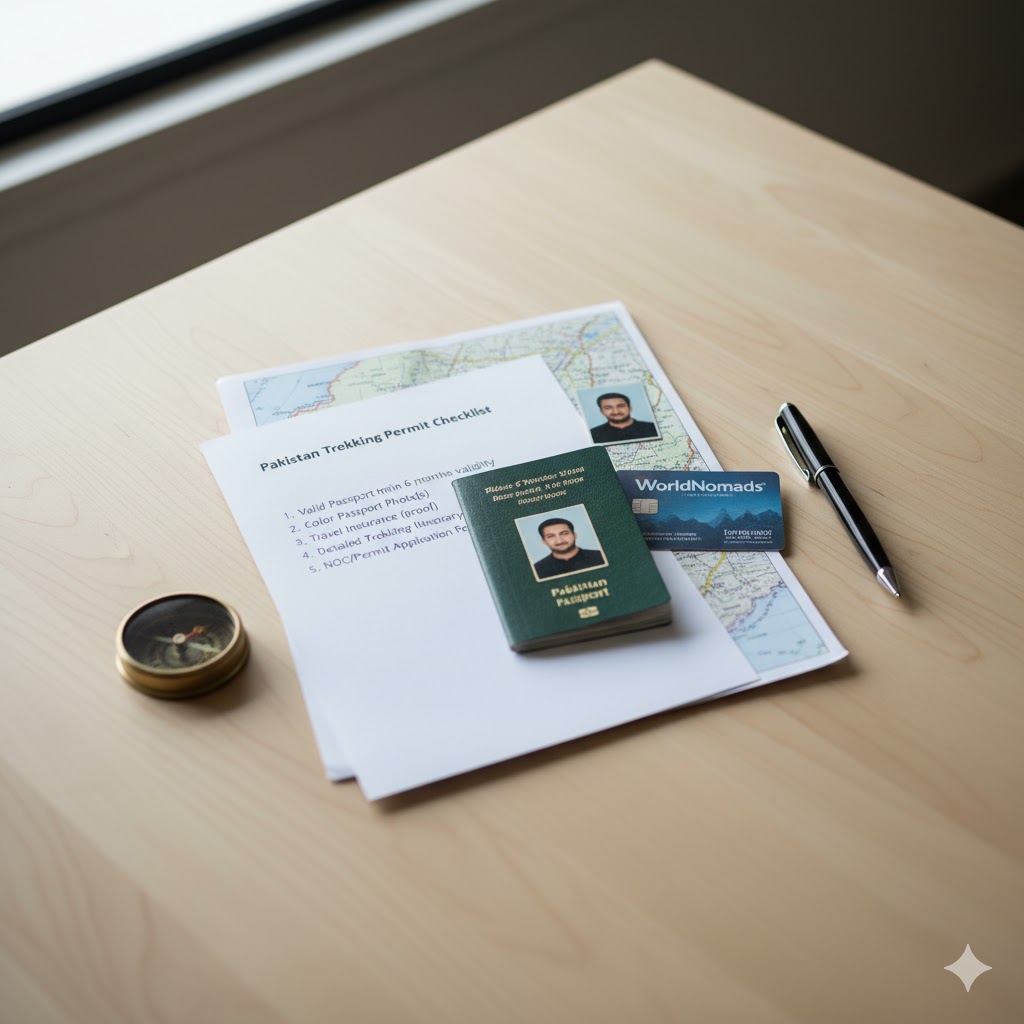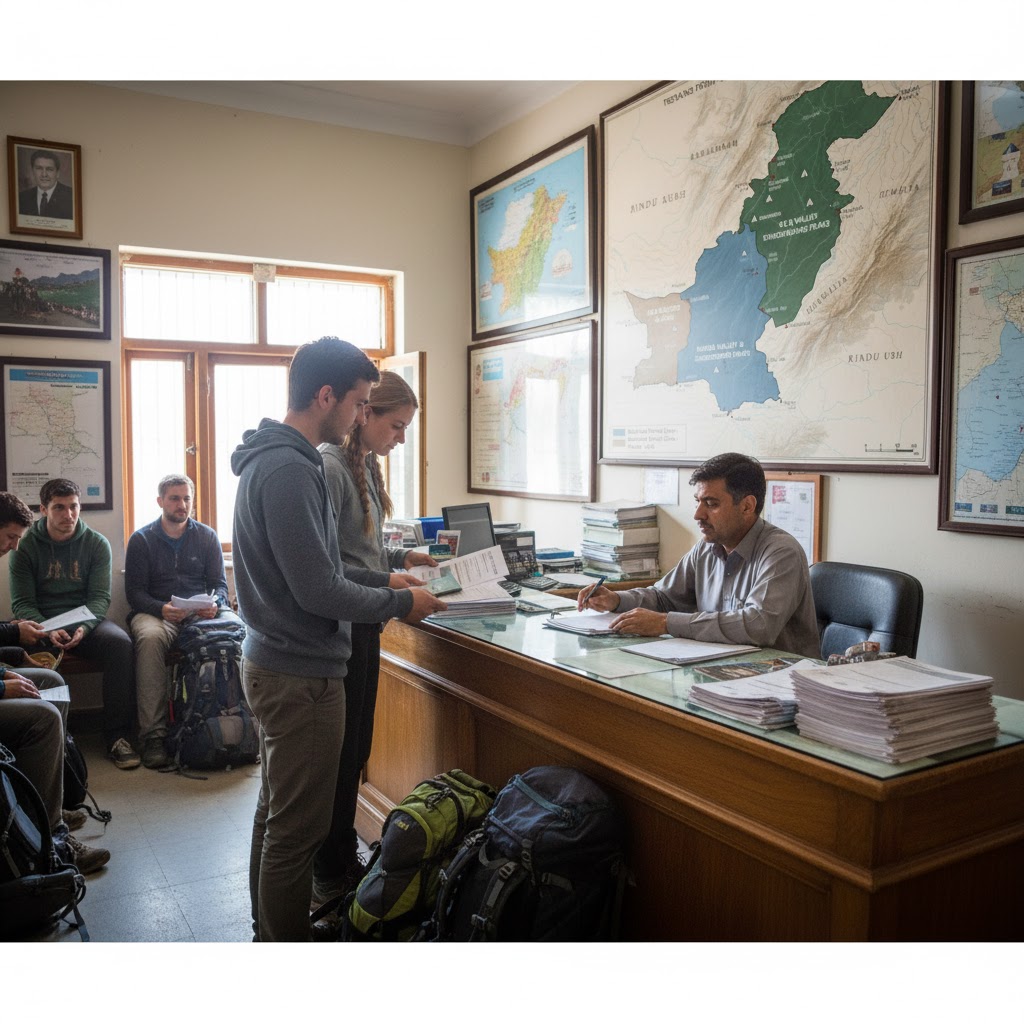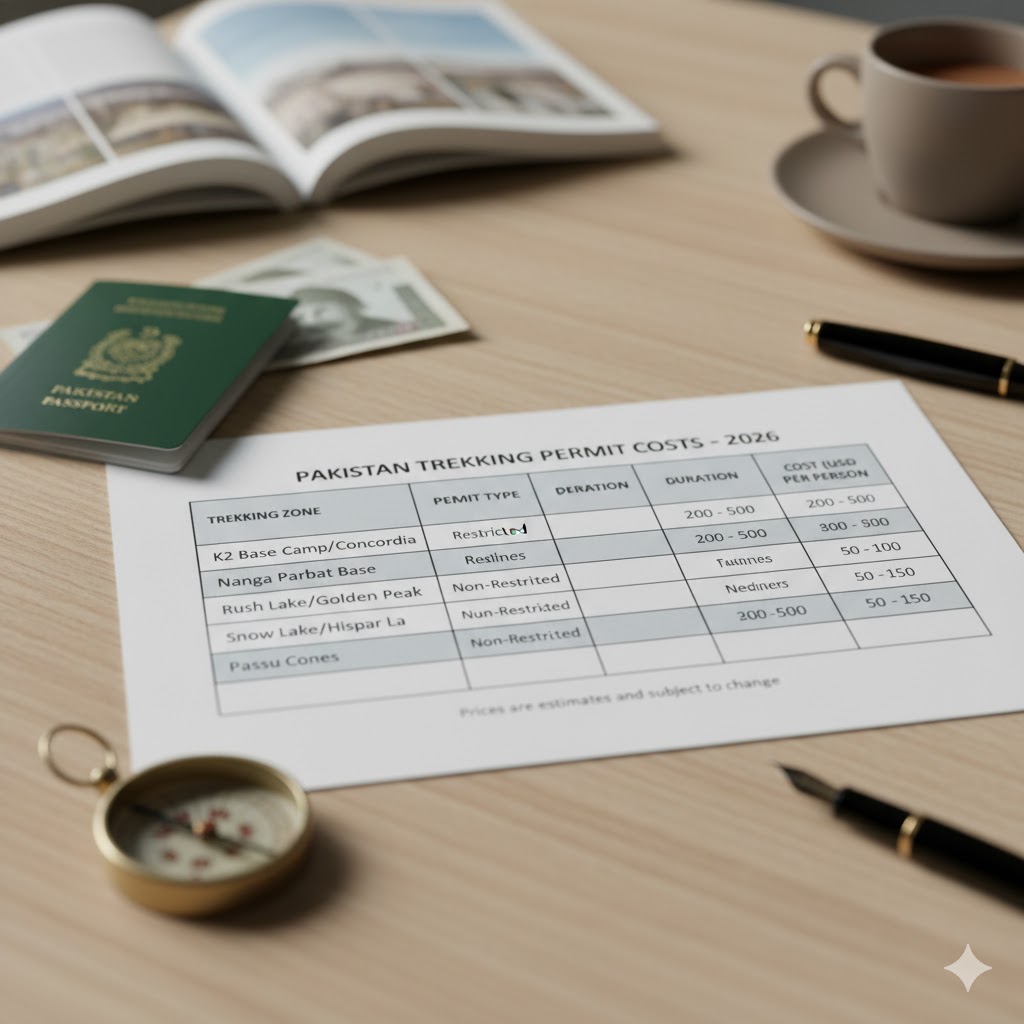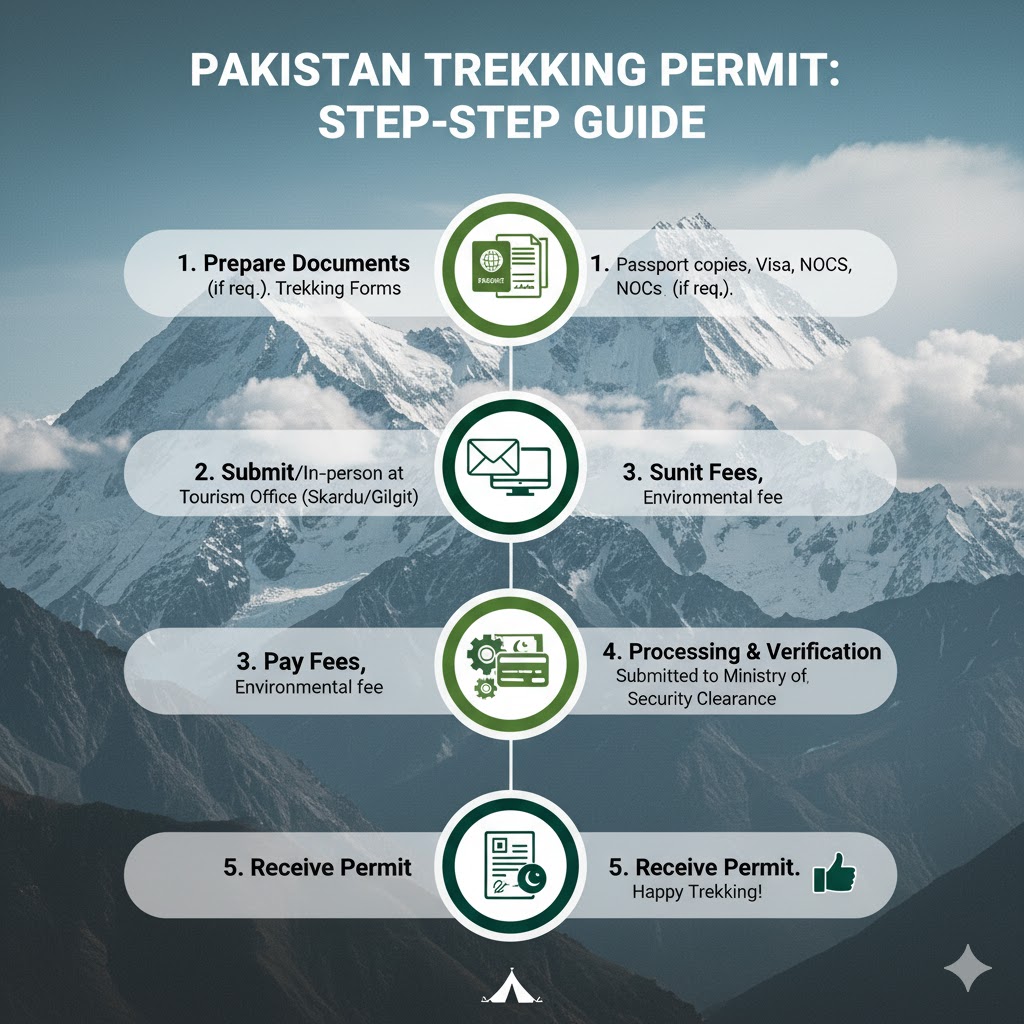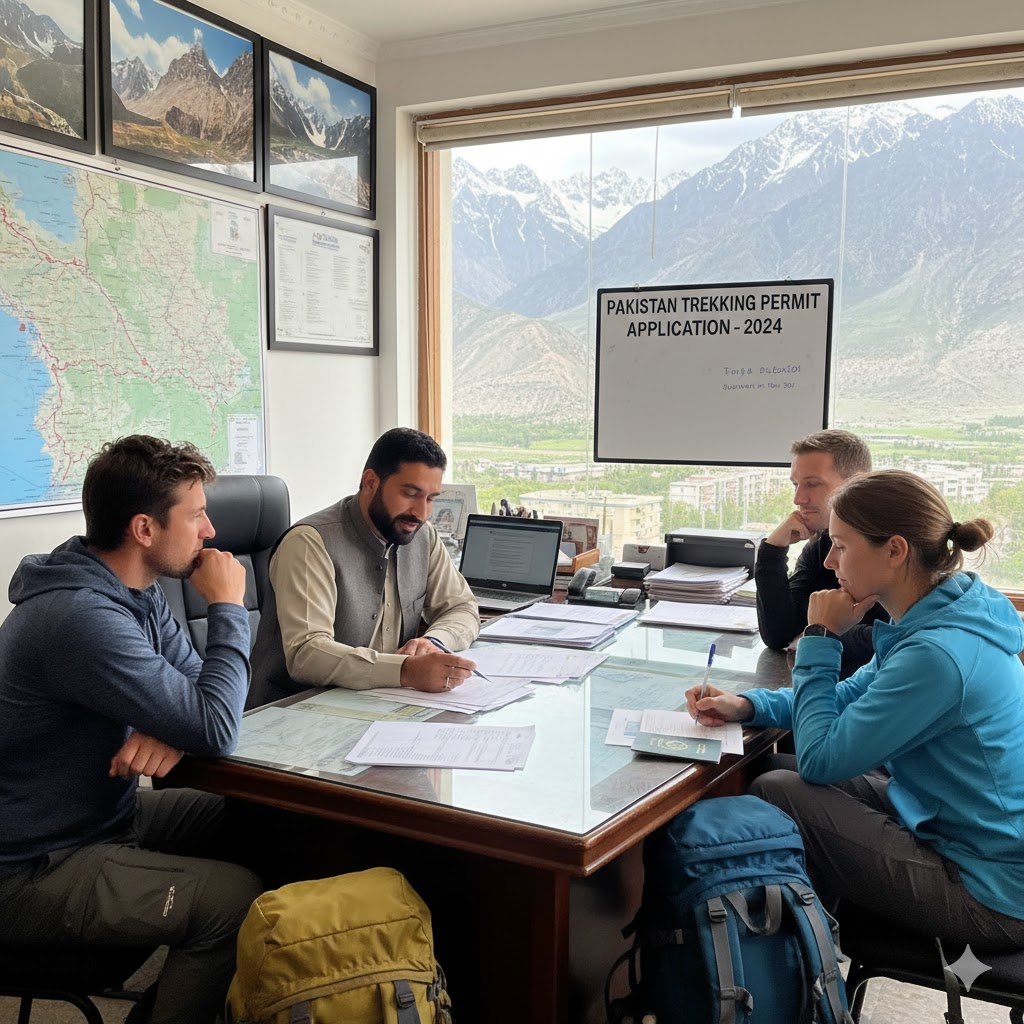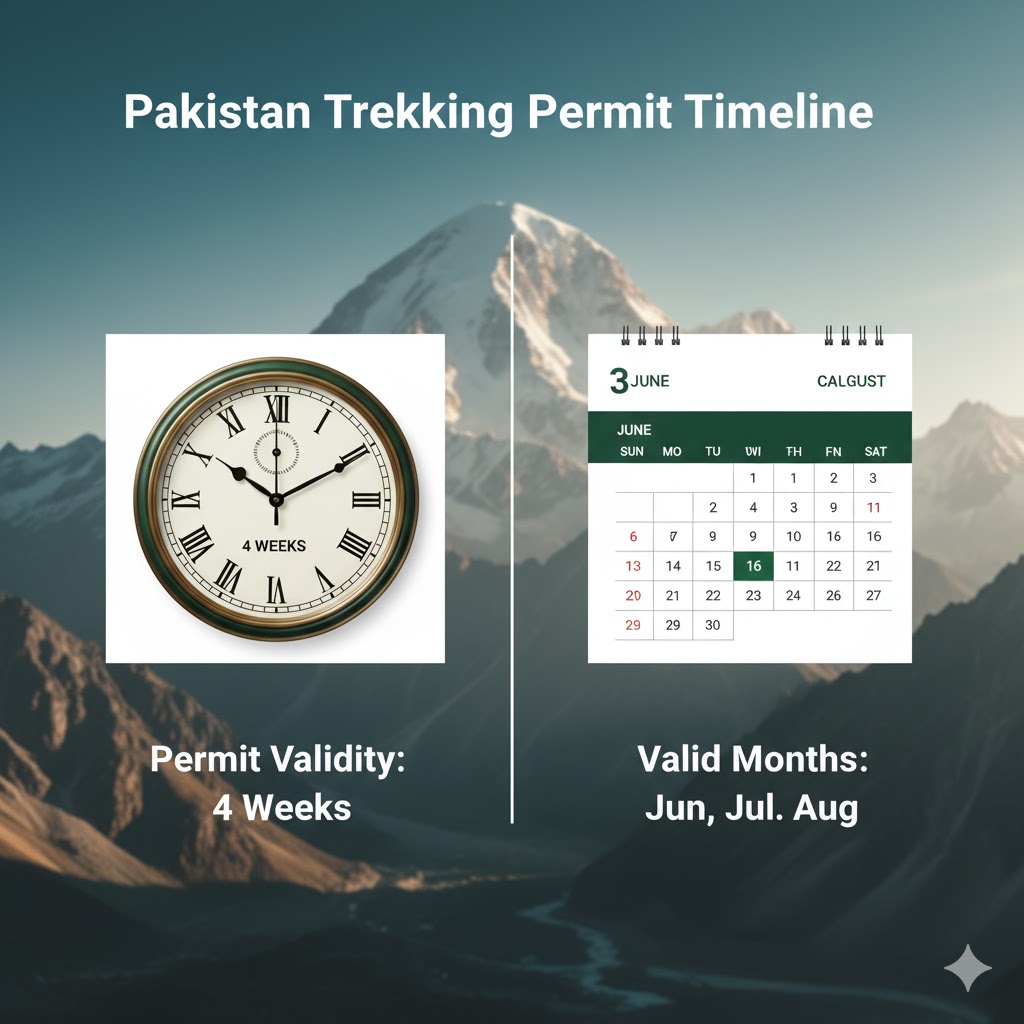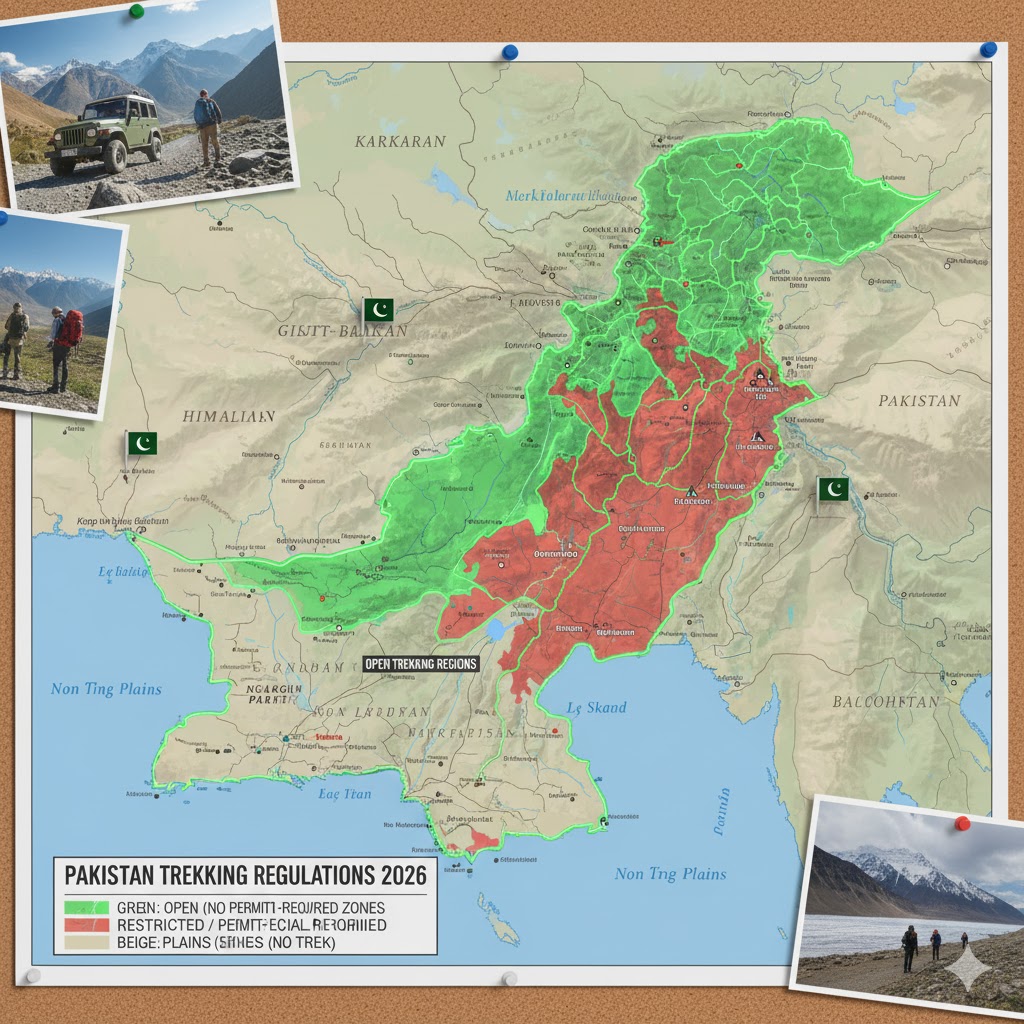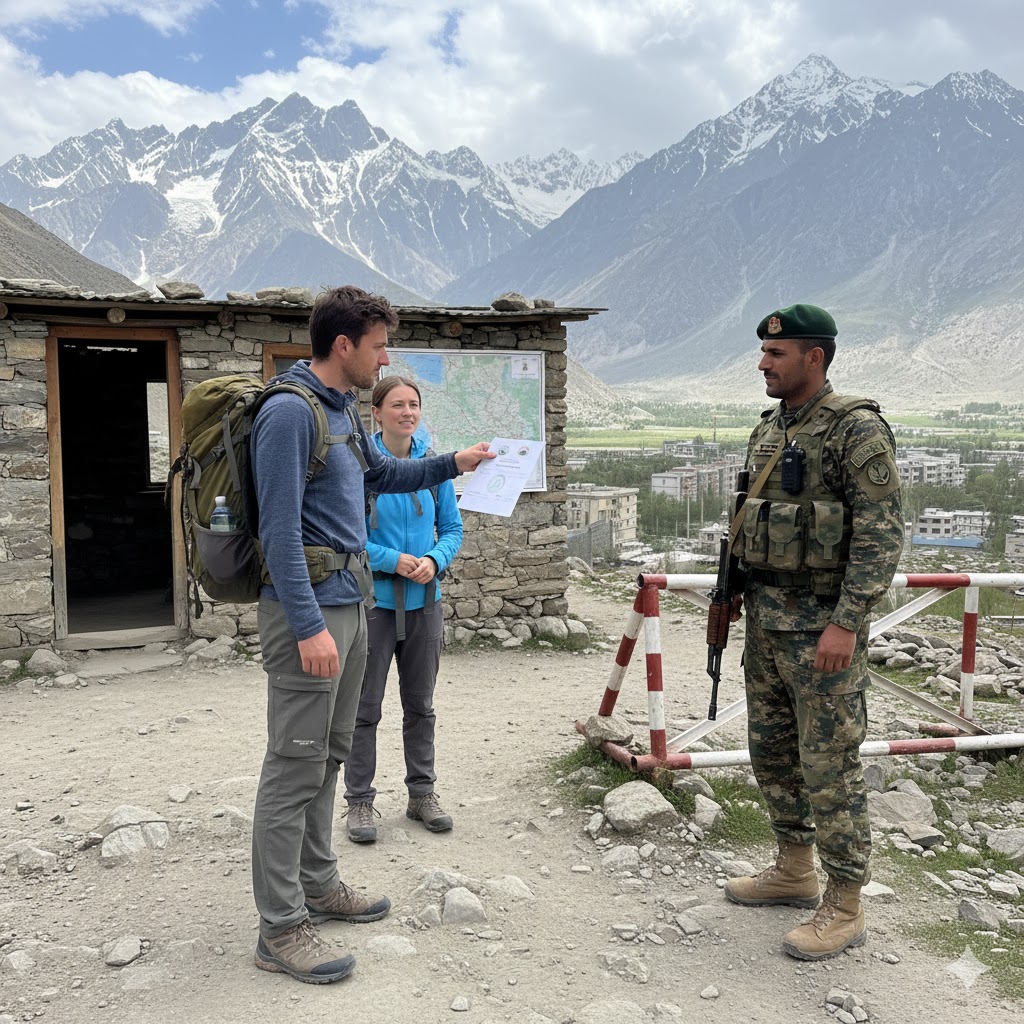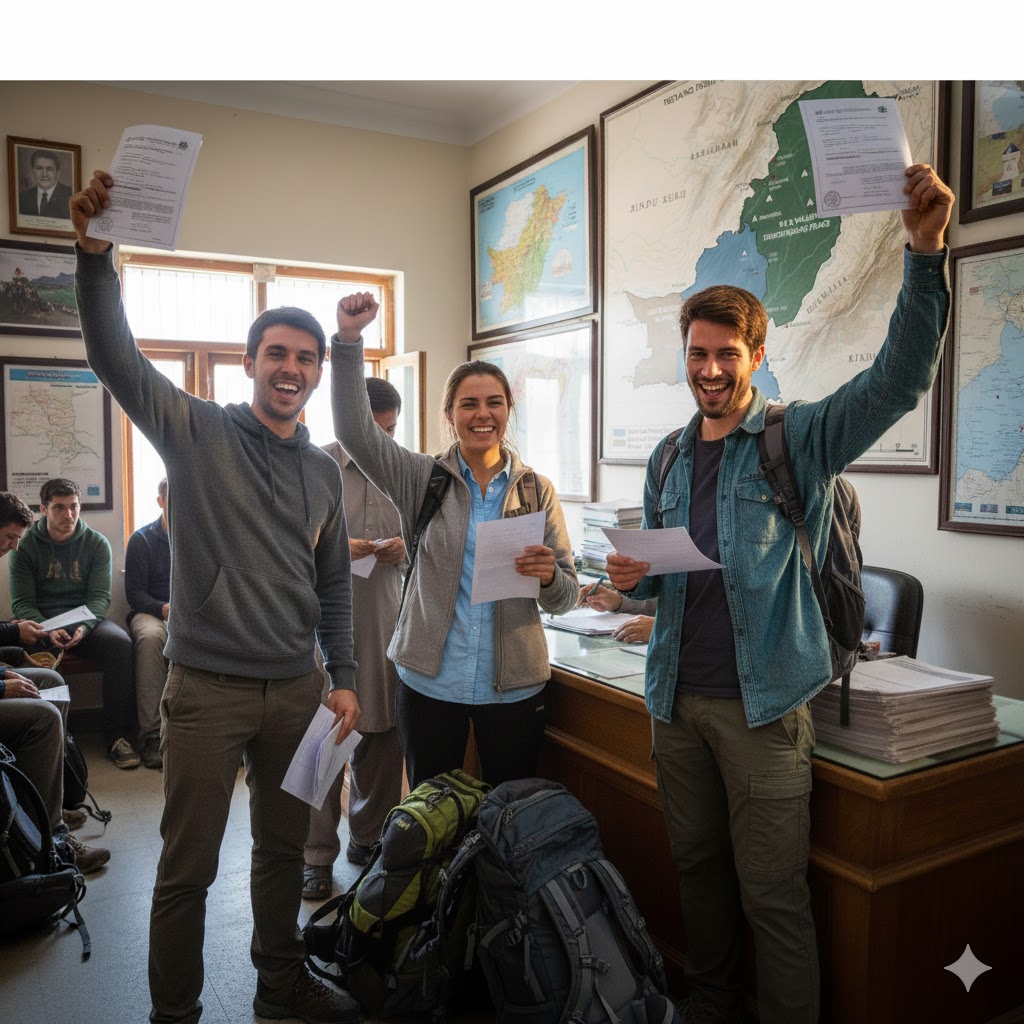Introduction: Why You Need a Trekking Permit in Pakistan
Trekking in Pakistan isn’t just a journey through mountains — it’s an adventure through some of the world’s most restricted high-altitude zones. Because much of northern Pakistan lies near sensitive borders (China, India, and Afghanistan), a Pakistan trekking permit is often required before entering these regions.
If you’re planning a 2026 expedition to K2 Base Camp, Snow Lake, or even Rakaposhi Base Camp, understanding the permit process is crucial. This guide walks you through each step — from the paperwork and costs to where and how to apply.
1. Understanding the Pakistan Trekking Permit System
The Pakistan trekking permit system is designed to regulate foreign and local trekkers visiting Gilgit-Baltistan and Chitral regions. While easy treks like Fairy Meadows require no permit, high-altitude treks crossing glaciers or borders demand formal clearance.
Permits are categorized by:
- Open Zones: No permit required (e.g., Fairy Meadows, Hunza Valley).
- Restricted Zones: Permit + NOC required (e.g., Baltoro Glacier, Concordia, Snow Lake).
- Climbing Zones: Climbing permit via the Alpine Club of Pakistan.
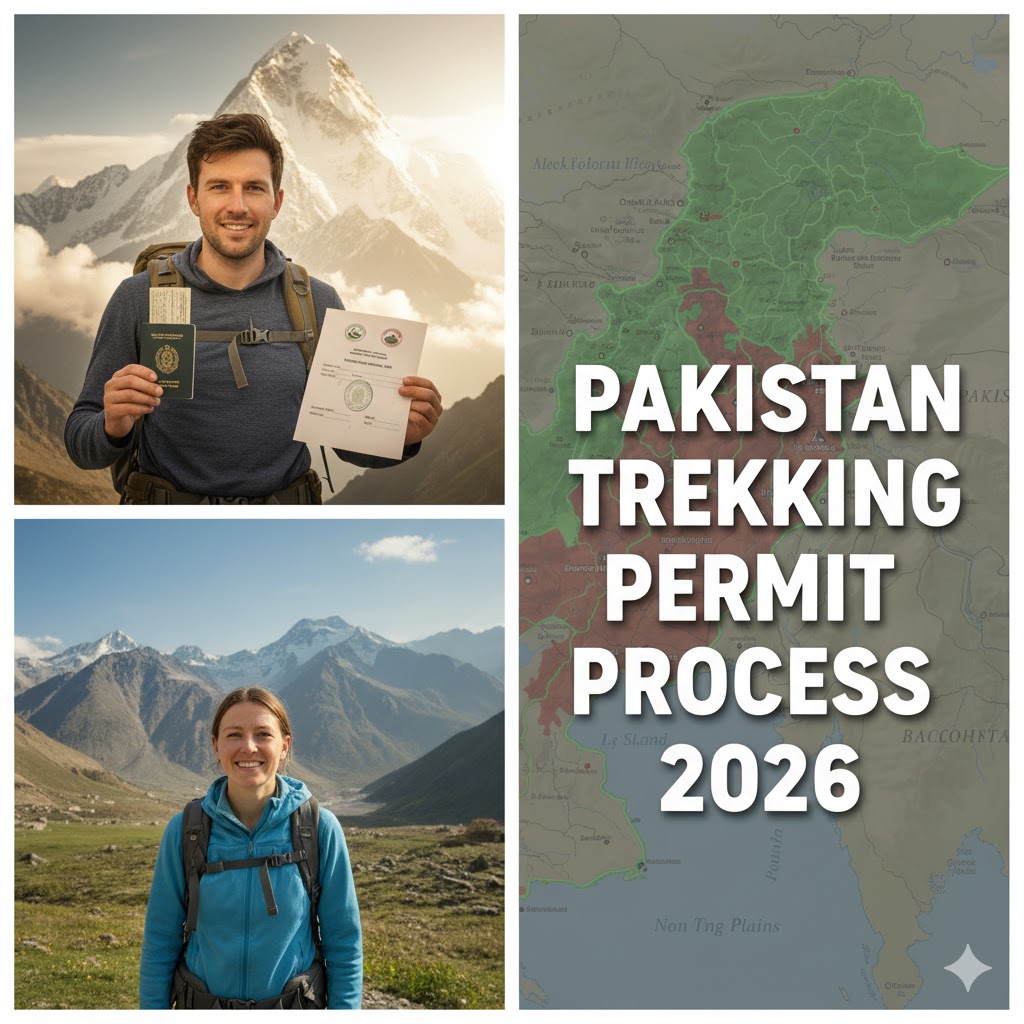
2. Required Documents for Trekking Permit
Before you start your Pakistan trekking permit application, prepare the following:
- Passport copy (valid for 6 months)
- Valid Pakistani visa or e-visa confirmation
- Recent photographs (2–4 passport-size)
- Detailed trekking itinerary
- Insurance certificate (with altitude coverage)
- NOC request letter (for restricted areas)
- Letter from registered tour operator (if applicable)
3. Where to Apply for a Pakistan Trekking Permit
There are three main authorities managing trekking permits:
| Authority | Region | Processing Time | Contact |
|---|---|---|---|
| Gilgit-Baltistan Council Secretariat | Skardu / Gilgit | 3–7 working days | Local offices in Skardu, Gilgit |
| Ministry of Interior (Islamabad) | National | 10–14 working days | For restricted NOC issuance |
| Tourism Department of KPK / GB | Regional Treks | 2–5 working days | For domestic treks |
You can also apply through registered tour operators, who handle the entire process for a service fee of $50–$100 USD.
4. Permit Fees and Associated Costs (2026)
Permit fees vary depending on trek difficulty, location, and group size.
| Trekking Zone | Permit Type | Approx. Fee (USD) |
|---|---|---|
| Fairy Meadows / Nanga Parbat View | None | Free |
| Rakaposhi Base Camp (Hunza) | Open Zone | $10–$20 |
| K2 Base Camp / Concordia | Restricted Zone | $150–$200 |
| Snow Lake / Hispar La | Restricted Zone | $120–$180 |
| Biafo Glacier | Restricted Zone | $80–$120 |
💡 Pro Tip: Always carry multiple photocopies of your permit for checkpoints — you’ll need one at almost every military post in Gilgit-Baltistan.
5. Step-by-Step Pakistan Trekking Permit Process
Here’s the simplified step-by-step process for 2026:
- Plan your trek itinerary (route, start & end dates).
- Choose a local tour operator (mandatory for restricted areas).
- Submit your documents (passport, visa, photos).
- Pay the permit and NOC fee via bank draft.
- Wait for processing (3–14 days).
- Receive permit + NOC approval via email or hard copy.
- Carry permits during your trek and present them when requested.
🧭 Note: Trekkers in 2026 can expect faster digital approvals as Pakistan Tourism expands its online e-permit platform.
6. Role of Tour Operators in Permit Issuance
International trekkers cannot directly apply for restricted-zone permits; they must apply through a licensed tour operator registered with the Department of Tourism, Gilgit-Baltistan.
Popular and verified agencies include:
Tour operators also coordinate with local security forces, ensuring your group gets clearance for camping and checkpoints.
7. Processing Time and Validity
- Processing Duration: 3–14 business days
- Permit Validity: Equal to your trek duration + 2 buffer days
- Renewal: Must be reapplied if itinerary changes or extended
8. Regions That Require Trekking Permits in 2026
| Region | Status | Reason |
|---|---|---|
| K2 / Baltoro Glacier | Restricted | Border proximity |
| Snow Lake & Hispar La | Restricted | Military zone |
| Passu & Shimshal Valleys | Partial | Remote access |
| Fairy Meadows / Nanga Parbat | Open | Tourist-friendly |
| Hunza / Rakaposhi Base Camp | Open | Easy access |
| Deosai Plains | Open | National park (entry fee only) |
9. Expert Advice & Local Insights
💬 Ali Raza (Local Trekking Guide, Skardu):
“If your trek crosses more than one district, always list all checkpoints on your permit — it prevents delays at military gates.”
💬 Saira Ahmed (Permit Officer, GB Tourism Dept):
“In 2026, we’re digitizing the NOC process to cut waiting time by half. Always double-check your operator’s license before paying.”
References:
Must Visit:
Sources:
- Pakistan Tourism Development Corporation (PTDC)
- Gilgit-Baltistan Tourism Department
- Alpine Club of Pakistan
11. FAQs
Q1: Can I get a trekking permit without a tour operator?
A: Only for open-zone treks. Restricted regions require a licensed operator.
Q2: How long is the Pakistan trekking permit valid?
A: It remains valid for the trek duration plus two additional days.
Q3: What if I lose my trekking permit mid-trek?
A: Report immediately to the nearest checkpoint or police post for a temporary replacement.
Q4: Are drone permits included in trekking permits?
A: No, drones need separate authorization from the Ministry of Interior.
Traveler Guide: Permit First, Adventure Next
Getting your Pakistan trekking permit is the gateway to a world of breathtaking wilderness. Whether you’re hiking to K2 Base Camp or exploring Hunza’s alpine meadows, proper documentation ensures safety, legality, and smoother travel through restricted routes.
As 2026 brings more digitization and online platforms, the process is becoming faster and more traveler-friendly. Apply early, use authorized operators, and keep digital and printed copies handy — then focus on what matters most: the journey itself.

